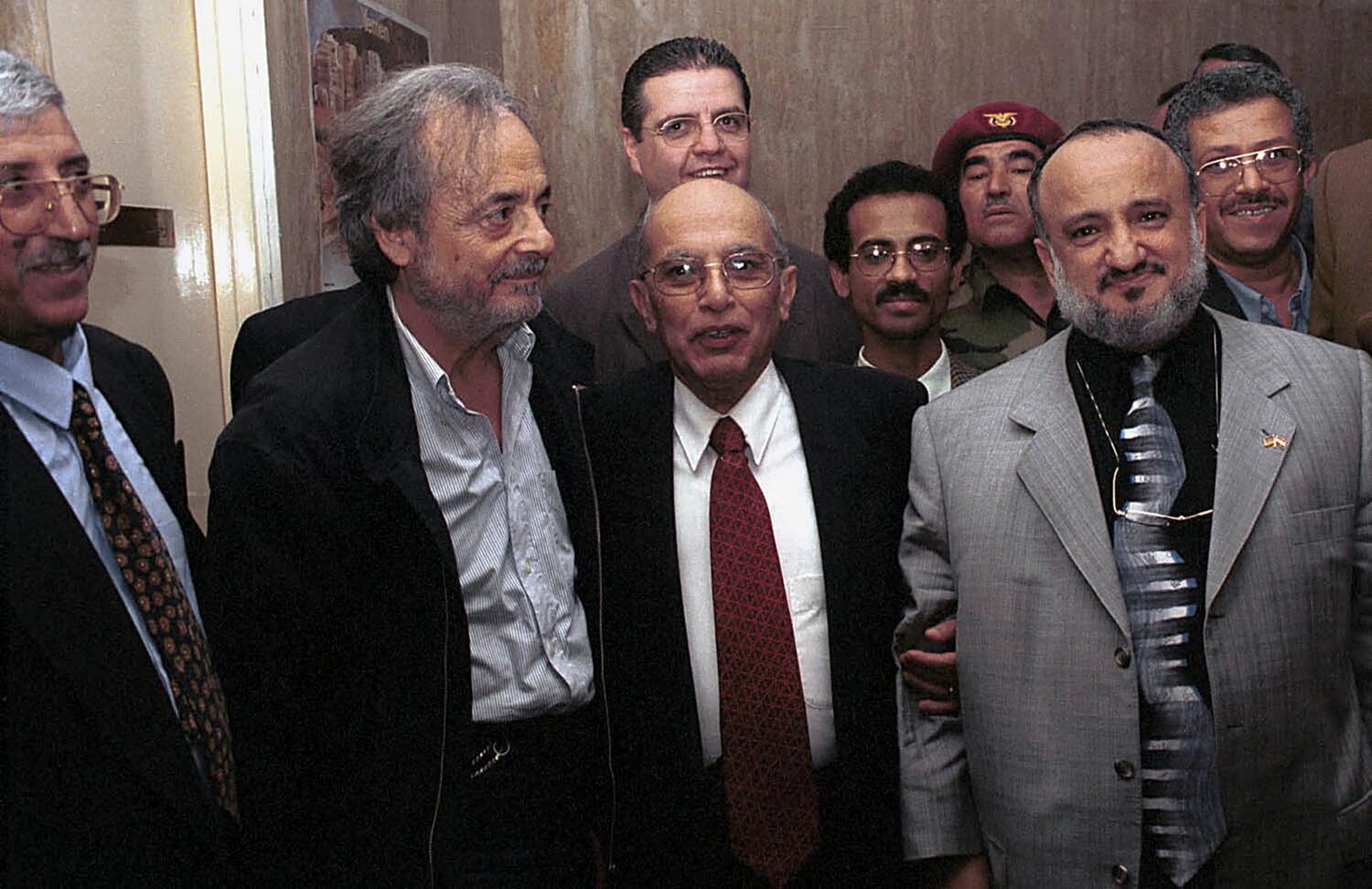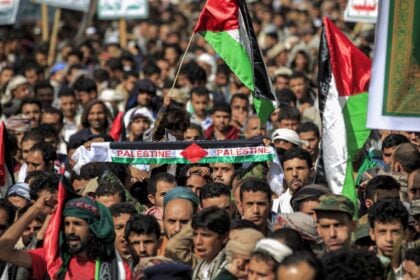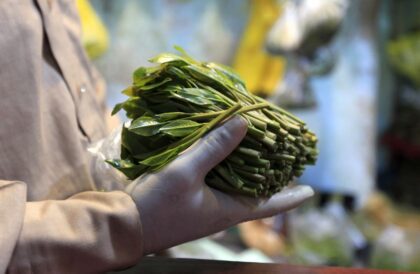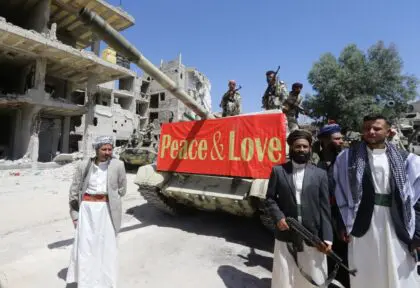
Introduction
We may not add anything new if we refer to the significance of Yemeni cultural heritage, as it is a clear testimony over the history of human creativity, with all its hidden richness and treasures of great cultural value, capable of adapting to the natural terrain and resilience in the face of various environmental phenomenons.
However, we are facing one of the most important civilizational features of human steps, since humans first set foot on land. It is a global human heritage par excellence, containing a lot of the mysteries of ancient history. An untraditional heritage that holds fundamentals of knowledge wealth, which made it one of the priorities of the “ UNESCO “, through providing funding and experts for protecting it as a source of inspiration for various arts. Also, it has not stopped issuing warnings after warnings about the impact of the conflict in Yemen since 2014 on the rich and diverse cultural heritage of the country, and its impact on the exacerbation of the social and economic problems of Yemenis.
Yemeni archaeological monuments didn’t survive the war damage, as 101 archaeological sites and landmarks were damaged and destroyed till February 2019, according to Al-Monitor, due to lots of damages via various causes, most significant of which is using archaeological sites as military sites by parties of the conflict, smuggling and trafficking operations, random drilling or burglary and building on parts of it.
Yemeni architecture is historically distinguished by features that help perpetuate its properties, and at the same time help it adapting to international modern variables, as these properties and features are related to the environment, society’s life patterns and behaviors, its beliefs and culture, as it also united with the available objective geographical, physical and climatic conditions.
Yemeni songs have various patterns, there is al-Ghina al-San’ani, al-Hadrami, al-Adeni, al-Lahiji, al-Yafeei, al-Tohami, al-Taa’zi, and others. This diversity is due to geographical factors that reflect regional and climatic diversity, as well as social and psychological factors. Because of the diversity of folk songs, folk dances accompanying the songs vary. Each region, as well as every occasion, has its distinctive songs and dances.
While Yemeni literature has gone through different developmental stages which are directly related to the history of political facts and ideas at the Yemeni level in particular, and the Arab level in general, Yemeni poetry was rapidly influenced by its literary surroundings, responding to evolutionary patterns in terms of form and content, while preserving traditional patterns, and thus it combined, throughout its journey, between tradition and contemporary.
On the other hand, the Yemeni novel went through escalating evolutionary trends, but poetry and the short story remained at the forefront of publishing.
To learn more about the culture of Yemen with all its various aspects, check what Fanack has covered about this file.
Architecture

The most visually striking feature of Yemen is undoubtedly its architecture. Houses seem to hang from rocks at the most unlikely places, blending in with the steep and spectacular landscape. Western architects typify Yemeni architecture as lacking a plan – on paper, that is, though there is mental plan – but built by excellent craftsmen. Each house has been adapted to its surroundings, with regard to the materials used, as well as to form and dimensions. Each traditional Yemeni house is thus unique.
The architecture is diverse. Stone is used in the higher mountains. In Sanaa, the hundreds of five-storey houses (lower storeys of stone, upper storeys of fired bricks) compete keenly in height. At the top of each house is the mafraj, a penthouse-like guest room with panoramic views and full of mattresses and pillows. The other rooms have smaller windows, with coloured glass and crowned with a qamariya, an arch made of gypsum (or expensive alabaster). Gypsum whitewash, which has to be renewed every other year, decorates the outside walls. Massive wooden doors, carved elaborately and decorated with metal, give access to cool stairways. Between the housing blocks there is room for trees and bustans, large vegetable gardens.
Mud brick is used as a building material in the foothills and plains. In the Saada region, groups of irregularly quadrilateral houses blend in easily with the colour of the earth, resulting in a unity of tone much like that of the mud-brick architecture of Djenné, in Mali. It is possible to walk around Saada on the mud-brick wall surrounding it. The houses it protects are soberly decorated with bands of white plaster. A masterpiece of Yemeni architecture is Shibam, once the capital of the Hadramawt, and nicknamed the Manhattan of the Desert. Shibam boasts the world’s first skyscrapers, which are made of mud bricks, and are up to seven storeys tall.
Shibam has been designated a World Heritage site by UNESCO, with restorations constantly under way to protect the city from ruin. In fact, many Yemeni architectural masterpieces are constantly being restored, as mud and gypsum are washed away by the rain and wind. Restorers are reinventing traditional architecture and training new generations in age-old skills. Funding is usually provided by foreign donors, because maintenance often proves too costly for Yemen. Restoration of the famous Amiriya Madrasa, in Rada, was completed in 2006, but many historic buildings throughout Yemen, including a large number of domes and citadels, are on the verge of collapse, awaiting repairs and restoration. The same is true of archaeological sites.
Oral Culture
Yemeni popular culture reflects the roughness of life, climate, and terrain, but Yemeni language and speech can be very eloquent. Conversations are laden with proverbs and sometimes turn into verbal jousts. This may reflect zamil, a form of traditional tribal poetry with pre-Islamic roots, in which short poems are made up on the spot or recited from memory. Tribal disputes and modern social conflict – many problems have been solved through the chanting of zamil. Few poems are written down. Yemenis do not read much, but they do have well-trained memories. Age-old stories, songs, and poems are passed on orally to new generations.
All Yemenis speak Arabic, the Sanaa dialect in the north, the Taizzi (or Adeni) dialect in the south. As many as half a million people in the eastern Hadramawt, and the Hadrami diaspora in East Asia, speak Hadrami Arabic. About 60,000 people on the island of Socotra speak Socotran (Soqotri), a Semitic language distinct from Arabic; it has been influenced by Indian and African languages, and by Portuguese. Most Yemenis speak no foreign language.
Music and Dance

Yemeni music is little known outside the country. There are few famous Yemeni singers, as the musicians and songwriters have only limited resources for recording and marketing their music. Nevertheless, rumour has it that Yemeni songs are often ‘stolen’ by musicians from the Gulf, who reportedly record Yemeni songs under their own name.
Music is widely played, and songs are sung continuously during work and on long taxi drives. Small orchestras often perform at ceremonies and other feasts. Instruments used are the ud (lute), various small drums, and the flute. The singers usually remain seated. Dancers enter the floor halfway through the songs and walk rhythmically, usually in pairs, then split up and come back together. Often they brandish the jambiya dagger, mimicking a fight or some other incident. After the first round of the dance, the audience is gestured to join in. Several types of traditional dance are performed by women.
Literature
For objective and technical considerations, Dr. Ahmed al-Ezzi Sagheer divides the historical development of Yemeni modern literature into 4 main stages:
The public awakening stage, which began a few years before 1948 war, as literature was directed to motivate the Yemenis in this stage and awake them from their coma to sense their national responsibility against injustice and despotism, and to support resistance/struggle and liberation movements. Litterateurs and writers were affected by modern literary doctrines (classic – romantic – realistic) which emerged in Europe then in the Arab countries.
The protest and interaction stage (1948 – 1955), where Yemeni literature was oriented towards protesting against and criticizing the regime and its oppressive methods and called people to revolt against it. Yemeni writers and Litterateurs passed the affection stage and began to creatively interact with artistic trends and modern literary doctrines. In this stage, the romantic voice had the most prominent presence in the Yemeni literary arena besides some classic voice and realistic sprouts.
The third stage (1955 – 1963): the stage of rebellion, revolution and self-assertiveness, where the Yemeni Litterateur wasn’t just affected or interactive with the entirety of literary and artistic developments in the Arab literary arena, rather he wanted to announce his literary presence and present himself through his personal way. As a consequence of the revolutionary tide in this stage and the liberation movements in the Arabian spheres, the realistic voice was the most prominent presence in the Yemeni literary arena, beside some romantic and classic voices.
The fourth stage (1963 – and beyond): objectively, this stage can be called the stage of liberation and construction, while artistically it was the stage of openness. In this stage, all voices overlapped in the Yemeni literary arena (classic – romantic – realistic).
Poetry

The classic stage of Yemeni modern poetry development stages is represented by poet Mohamed Mahmoud al-Zobeiry, poet Mohamed Abouh Ghanem, poet Zyd al-Mushki and others. Yemeni poets preserved the constituents of the old Arabian poem that’s based on preserving literary style, meter, rhythm, and poetry depiction expressing social and national reality. This development stage of Yemeni poetry – the stage of classic simulation and imitation – after World War II according to the Litterateur Dr. Atef Abd el-Latif al-Sayed.
As for the Yemeni modern poetry stage – the romantic stage -, it is represented by a group of poets, amongst which: Ahmed Mohamed al-Shami, Ibrahim al-Hadarani, and Lotfi Gafar Aman. The first creativities of these poets responded to the development that befell the Arabian poem in numerous countries of the same nation, and their experiences were characterized by complete adherence to “the new” as a new life for poetry and the poet at the same time, and by the conversion of poetry from the traditional pattern to the modern pattern, be it in the form of the poem or its content. They used romantic styles, compositions and phrases for self-expression and human experience.
Amongst the pioneer poets of the authenticity and contemporary stage; Abdullah Al-Baradouni, Mohammed Said Jaradah, Ali Ben Ali Sabrah, Mohamed Charfi, Dr. Abdulaziz Al-Maqaleh, and Dr. Ahmed al-Ezzi Sagheer.
Novel and Story
In recent decades, Yemen witnessed a relative launch of novels publishing; although poetry and short story remained at the top of the publishing scene.
According to Litterateur Dr. Abdulaziz Al-Maqaleh, novels had three main trends:
Firstly, the traditional trend, which was a simulation of the traditional Arabian novel with its objective, historical and emotional dimensions, and its technical, classical and romantic dimensions. The most notable representatives of this trend in Yemen are: writer Mohamed Ali Luqman, poet Mohamed Mahmoud al-Zobeiry, Ali Mohamed Abouh and Abdullah Mohamed al-Tayyeb Arslan.
Secondly, al-Tagdeedi trend (Renewing trend) which surpassed the previous trend in approaching the modern novelist construction, and it viewed the novel as a literary art that has its own form, peculiarity and artistic reference. Followers of this trend make up quite a number among countless novelists.
Thirdly, Modern trend, whose followers are very few creative elite novelists. Their first works were the spark of a rebellious novel in terms of idea, language and structure; a novel that broke the familiar narration, and at the same time refused the idea of the logical interconnection of events and the imposed stereotypes of the plot, and sought to prove interconnection between literary genres, and banish barriers between poetry and prose, or between novel and poetry, with a huge significance of symbolism. Amongst those; Litterateur Habib Habib Abdulrab Sarori, Mohamed Abd el-Wakeel Gazem, Samir Abd el-Fattah and Hend Haitham.
Film
In 2005, the British-Yemeni director Bader Ben Hirsi won the award for the best Arabic film at the Cairo Film Festival, with the movie A New Day in Old Sanaa, which was also the first Yemeni film shown at the Cannes Film Festival. In 2000 Bader Ben Hirsi shot the documentary The English Sheikh and the Yemeni Gentleman, featuring author Tim Mackintosh-Smith.
Khadija al-Salami has produced numerous documentaries and films, often focusing on the subordinate role of women in Yemeni society. Al-Salami herself suffered abuse and rape when she was married off to an uncle as an eleven-year-old girl, but she managed to escape both the marriage and Yemeni society. At the age of sixteen she travelled to the United States to study communication. She now lives and works in France.
Dress

Yemeni men traditionally wear a thawb (also called zanna, futa), a large cloth wrapped around their waist, held together with a broad, coloured belt and a dagger, and a buttoned shirt and a jacket. You can tell a man’s tribe and where he is from by the way he wears his head cloth (mshedda).
Most Yemeni women wear the niqab (face-veil) in public, others wear a burqa (body covering and headscarf). Urban women dress in black, rural women wear a more colourful dress and often only a hijab or a headscarf. Lately more urban girls and younger women have stopped covering their faces, wearing just a hijab (locally known as sharshaf) instead.
Food and Drink

Yemeni restaurants are lively places, with groups of men – women are seldom seen in restaurants – eating food from pots and plates placed between them. Yemenis do not use cutlery; eating with the right hand is the norm. Food is often served very hot on metal plates or in earthenware pots. Waiters generally shout their orders somewhere in the direction of the kitchen. Eating takes no longer than ten minutes, after which everyone goes his way, usually to a qat session.
In the morning Yemenis eat a small plate of cooked beans (ful). At midday they eat a solid meal, as an important preparation for the qat session. Chicken, beef, and fish are part of the diet of rich people, while poor people eat beans, more beans, kidneys, eggs, and bread. Vegetables are on most menus. In the evening Yemenis enjoy a small meal, the qat having suppressed their hunger. Food stalls are found everywhere in the cities, offering a wide variety of seasonal food. Food in the rural areas is often limited to home-grown vegetables and cereals.
Salta is the most popular and probably the most authentically Yemeni dish. It originated in the north but is also rapidly becoming part of the menu in the south. Salta is a stew, the ingredients of which vary regionally, including meat, onions, tomatoes, and potatoes; it is often made of leftovers. A bitter, frothy green sauce, helba, is poured over the stew. Helba is made from fenugreek seeds (hulba is fenugreek in Arabic), first beaten to powder and then steeped in water. The dish is served in a bowl hewn out of Saada stone. These bowls are heat-proof – all dishes are served literally boiling hot – and durable, by Yemeni standards. Salta is considered the best preparation for a qat session.
Yemeni bread comes in various forms, always freshly baked and mostly as small pita-like breads or very light, small loafs. Noteworthy is mallouj, which originated in Saada, in the north, and consists of an immense, folded bread deliciously flavoured with aniseed. Sweet dough is not as common in Yemen as elsewhere in the Arab world. An exception is bint al-sahn, a delicious cake made of thin layers of dough drenched in superior Yemeni honey and covered with clarified butter.
Drinks are mostly limited to tea. Shahai ahmar (shay ahmar, red tea) is a strong, sweet black tea, flavoured with cloves or mint. Shahai halib (shay halib, milk tea) is tea with sweetened condensed milk. Fruit juices are widely available in the cities. Coffee is drunk only occasionally and is often flavoured with cardamom. Yemenis more often drink qishr, a light drink made from coffee husks and cardamom.
Sports
Camel Jumping is one of the traditional sports in Yemen. A player has to jump over a line of camels, and the winner is the one who can jump over the most camels. Over time, Yemenis fell in love with football, and it became the most popular sport in the country. This sport is managed by the Yemen Football Association. Yemen has not won any tournament, though it hosted the Arabian Gulf Cup in 2010.
Due to his exceptional skills, the forward of Al-Ahli Sanaa club Ali al-Nono was selected as the best Yemeni footballer. In October 2020, Yemeni’s national football team ranked 143 in FIFA’s world ranking table.
Unified Yemen didn’t participate in the Summer Olympics until 1992. However, Yemen has not been able so far to win a medal.
Latest Articles
Below are the latest articles by acclaimed journalists and academics concerning the topic ‘Culture’ and ‘Yemen’. These articles are posted in this country file or elsewhere on our website:












